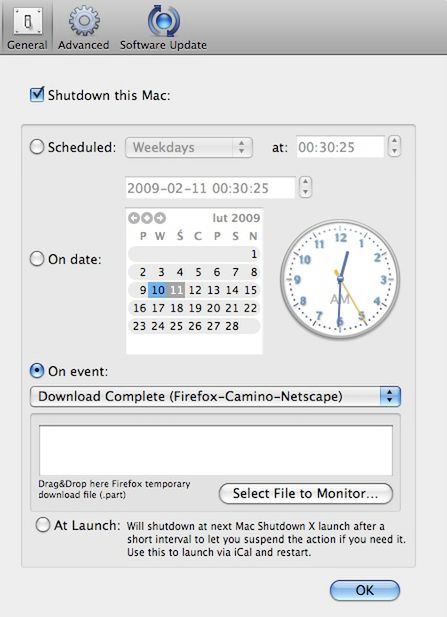
To restart your macOS system via the terminal app, we will also leverage the shutdown command. For example, if you want your macOS to shut down exactly 30 minutes from now, simply run the following command (Figure 3): The “hh” in hhmm represents hours (in 24-hour time) while “mm” represents minutes of the time.įor instance, if you want to shutdown the device at 10:19 p.m., you should run the following command (Figure 2):Īlternatively, you can schedule your device to shutdown at a particular time by defining minutes alone. If you want to schedule the device to shut down at a specific time, you can define that with the command below. Either way, using the terminal to shut down the device will make it inaccessible. Executing the command with no arguments will shut down your macOS after a minute. The -h argument will halt all processes immediately. When you run the command, you will have to provide your admin password. We added sudo to the command to gain admin-level privileges.

All you need to do to shutdown your device with immediate effect is to run the following command (Figure 1): Simply search “terminal” using the Spotlight search option on your device or navigate through Applications > Utilities > Terminal. To get started, you need to launch the terminal app. In this section, we will go through how you can execute a command in the terminal app to restart, shutdown, logoff, or put your device in sleep mode.

Logging Off, Restarting, or Shutting Down macOS Systems via the Terminal App If the user hasn’t quit each app before shutting down the device, the apps will reopen automatically, allowing the user to get back to work more quickly. All active applications will close once the device turns off. The device is immediately ready for the user to work on all the apps and programs that were running before putting it in sleep mode.įinally, just as the name implies, shutting down a MacBook means that you shut down the entire macOS system.
#Mac shutdown now password#
Depending on the settings, it may or may not require the user to enter their password upon waking. Wiggling the mouse or tapping the space bar will wake it up again. Putting the device in sleep mode will initiate a screensaver to conserve energy. If you restart a device, it will close all the active applications on the device and go through the startup process automatically. You can also you the command line to check the last reboot of a device. Restarting means to reboot the device so that it starts afresh. Logging off simply means you log out of the user profile the Mac will show the login screen where the user will need to log in before they can use the system again. Difference Between Logoff, Restart, and Shutdown on macOSīefore we dive into executing these commands via the terminal, it’s important to get acquainted with the difference between the actions. This tutorial presents the commands that can be executed in the command line to logoff, restart, or shutdown macOS systems.

#Mac shutdown now how to#
In these cases, it is critical for IT admins to understand how to logoff, restart, and shutdown the systems remotely, via the terminal. The major responsibilities of Mac sysadmins include managing, troubleshooting, maintaining, and updating macOS. Change your device name, hostname and local hostname.Enable SSH to access a remote Mac’s shell securely.

#Mac shutdown now series#
Check out the previous articles in this series to learn how to: This article continues our series on the common commands every Mac admin should know.


 0 kommentar(er)
0 kommentar(er)
